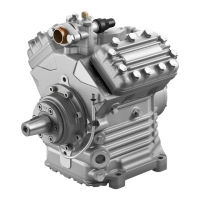
Do you have a question about the Danfoss BOCK FK40 and is the answer not in the manual?
| Brand | Danfoss |
|---|---|
| Model | BOCK FK40 |
| Category | Industrial Equipment |
| Language | English |
Explains safety symbols like DANGER, WARNING, CAUTION, ATTENTION, and INFO for hazard identification.
Specifies that only qualified personnel should work on pressurized refrigerant systems.
Warns about severe injury or death from flying parts due to extreme running noise or capacity reduction.
Covers risks of accidents, burns from high temperatures, and contact with refrigerants.
Defines the compressor's intended application in refrigeration systems and prohibits other uses.
Details the three available designs (K, N, TK) and key features of the FK40 compressor.
Explains the information found on the compressor's name plate, including type designation and operating pressures.
Deciphers the coding system used for compressor type designations, explaining design, swept volume, and series.
Lists compatible refrigerants for HFKW/HFC and HFCKW/HCFC types.
Specifies factory-filled oil types for different refrigerants and recommends oil types for recharging.
Details operating limits like temperature, switching frequency, and minimum running time, advising on thermal protection.
Provides instructions on safely moving, storing, and mounting the compressor on a stable surface.
Outlines maximum tilt angles and durations for continuous operation to ensure proper lubrication.
Warns about damage from improperly designed belt drives and mentions load changes with capacity regulators.
Explains how to prevent overloading the main bearing by managing belt tension and force application.
Describes the process for mounting an electromagnetic clutch, including bearing flange fitting and screw torque.
Discusses stepped internal diameters for pipe connections and matching pipe cross-sections to capacity.
Covers requirements for pipes and system components, including cleanliness, lay, vibration compensation, and pressure loss.
Details the procedure for opening and closing shut-off valves, including releasing and re-tightening the spindle seal.
Illustrates how to open shut-off valves and service connections using spindles, and fitting protection caps.
Recommends using a suction-side filter for systems with long pipes and high contamination, requiring periodic renewal.
Provides dimensions and specifications for M10 threads used for attachments and bracing on the K1 housing.
Emphasizes the mandatory need for pressostats on the installation side and checking for transport damage.
States that the compressor is factory tested, but system pressure tests should follow EN 378-2.
Details leak testing procedures using nitrogen, warning against overpressure and mixing refrigerants.
Describes the process of evacuating the system and compressor to achieve a vacuum below 1.5 mbar.
Provides instructions for refrigerant charging, emphasizing protective gear and avoiding overfilling or incorrect charging methods.
Explains how to check the oil level after startup, recommending checking both sight glasses and draining if too high.
Discusses potential refrigerant loss and damage due to shaft seal issues, noting normal oil leakage.
Outlines measures to prevent liquid slugging, including proper system design and ensuring sufficient suction gas superheat.
Details safety precautions before starting maintenance, such as switching off, securing, and relieving pressure.
Provides guidance on oil changes, interval recommendations, and emptying the shaft seal oil reservoir.
Describes when and how to change the shaft seal and empty the oil reservoir, and lists damaging effects on the seal.
Lists recommended maintenance sets for oil changes and shaft seals, and where to find spare parts.
States that the decompression valve is maintenance-free but may require checks for leakage.
Recommends using only Bock-specified oils and lists standard oil grades for different refrigerants.
Provides instructions for safely draining refrigerant and oil, and disposing of the compressor.
Explains capacity-regulated operation, its effects on gas speeds, and recommendations for oil return and switching intervals.
Describes the thermal protection thermostat, its connection, and technical data like switching voltage and temperature.
Presents key technical data including displacement, weight, connections, oil charge, and lubrication.
Provides detailed diagrams showing compressor dimensions, connection points, and mounting details.
Lists and describes the various connection ports (SV, DV, A, B, C, etc.) and their thread types.
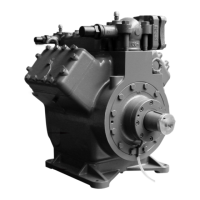
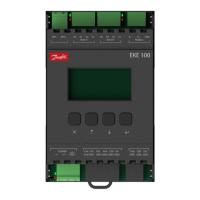
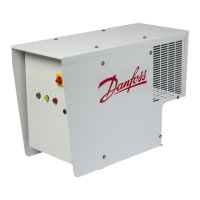
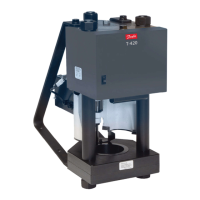
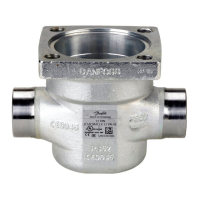



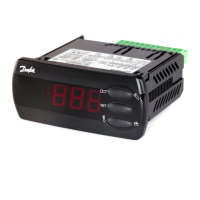


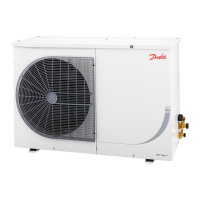
